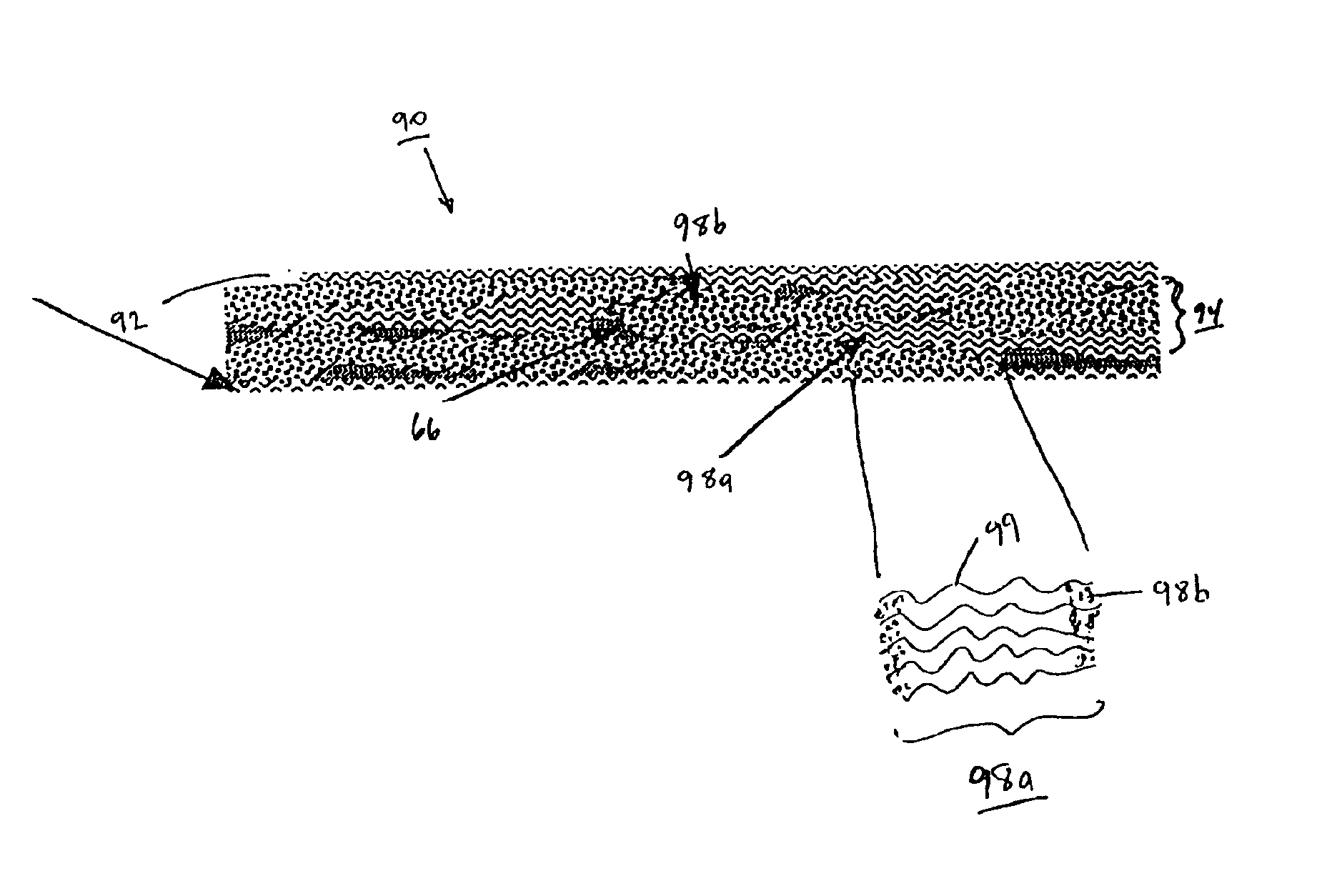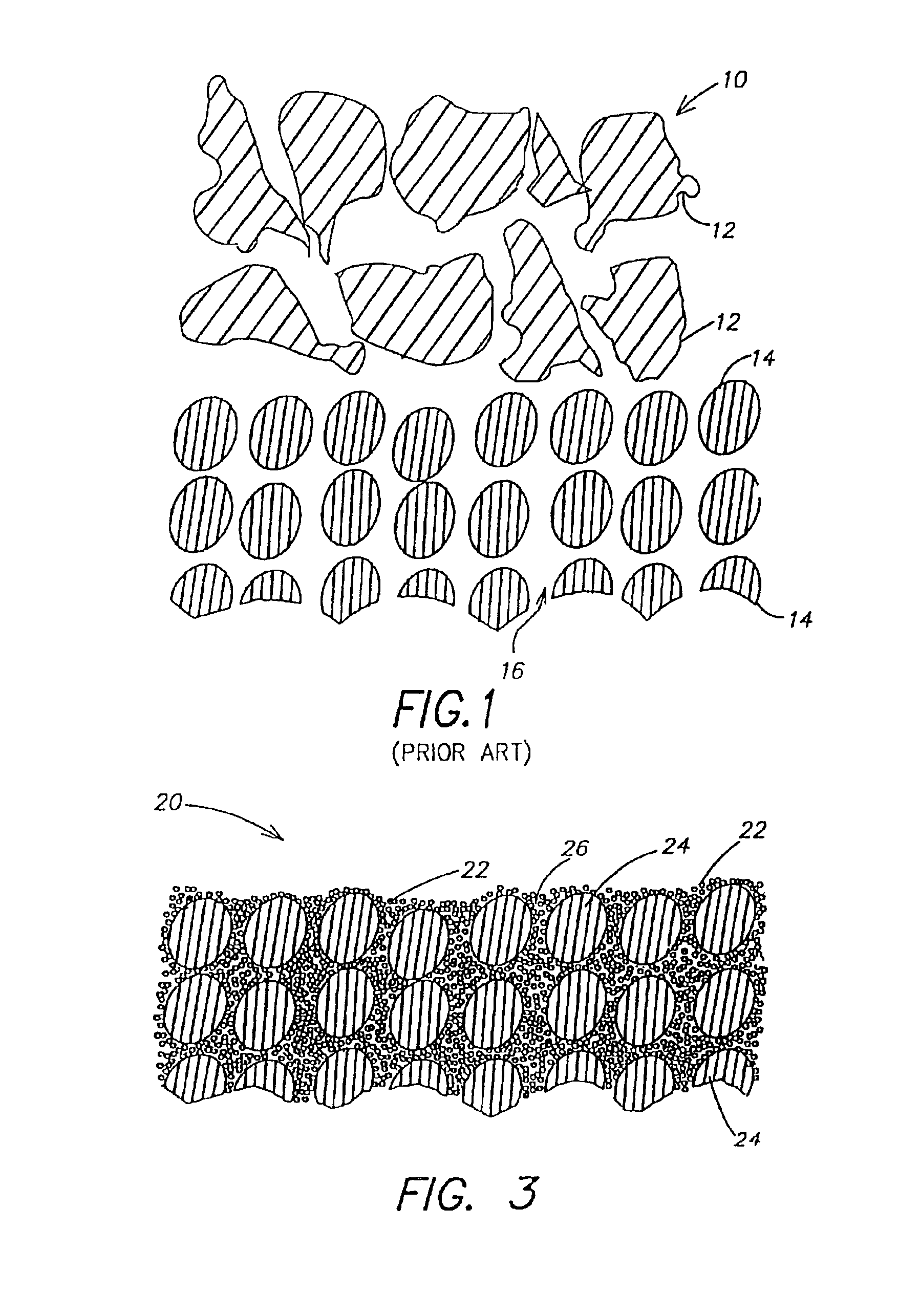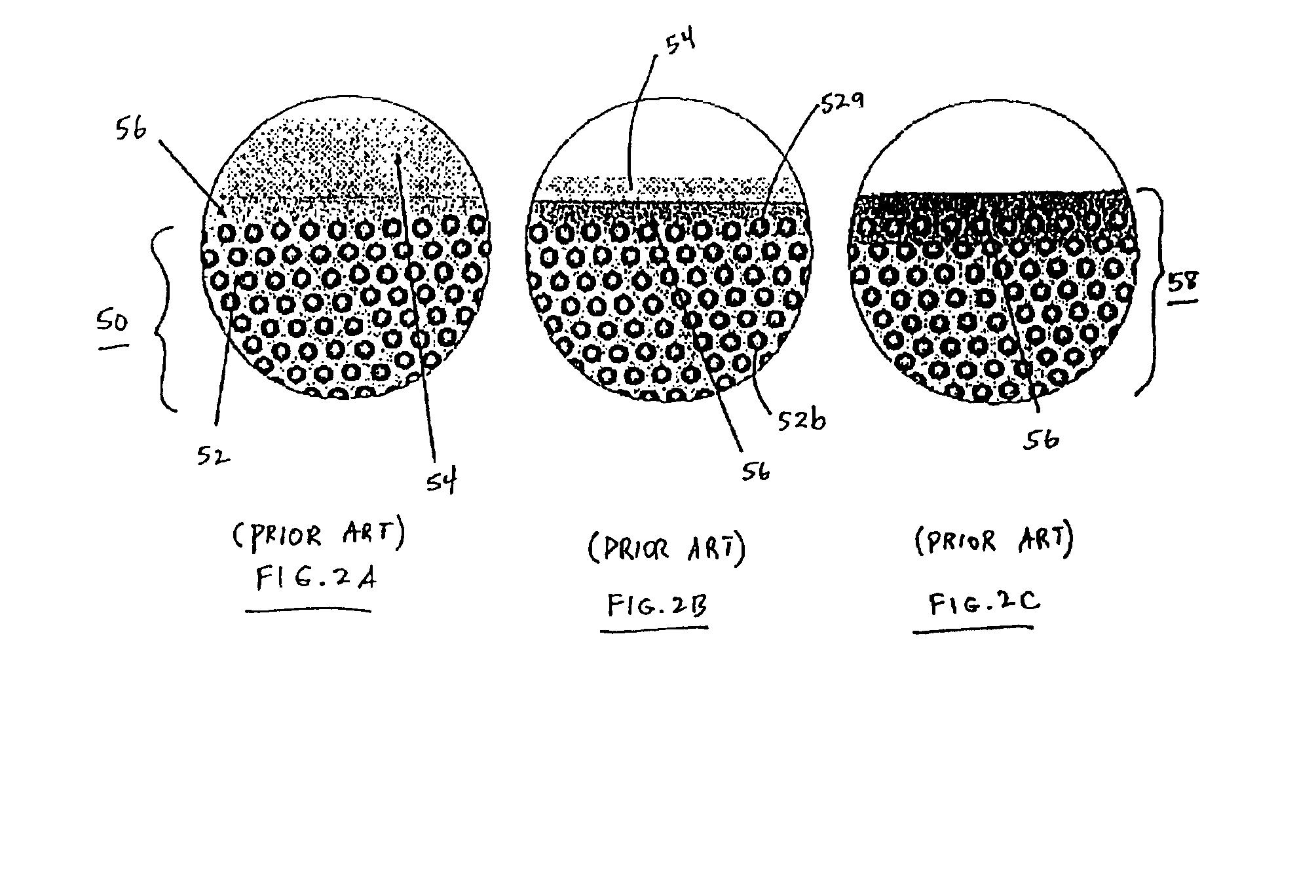Hybrid composite articles and methods for their production
a hybrid composite and composite article technology, applied in colloidal chemistry, light beam reproducing, instruments, etc., can solve the problems of difficult suppression, difficult to obtain a uniform matrix between the fibers, and difficult to obtain thermoset composites, etc., to prolong the stability time, stable emulsion, and small dimensions
- Summary
- Abstract
- Description
- Claims
- Application Information
AI Technical Summary
Benefits of technology
Problems solved by technology
Method used
Image
Examples
example 1
A styrene / acrylic copolymer emulsion (SA 204 from Para-Chem Inc.) was selected because of its properties. The polymer has a Tg (glass transition temperature) of around 200° F. if prepared by non-emulsion methods. If prepared by emulsion polymerization, SA204 has a Tg of 50° F. The latex has particles around 200 nanometers in size.
Glass fabrics are coated generously by immersing the fabrics in the emulsion and allowed to air dry for 16 hours. Once they are essentially dry, the sheets of prepreg are covered each side with a nylon film. The film coated prepreg is then pressed with a smoothing iron set at 200° F. (93° C.) resulting in a fusing of the particles. (Small latex particles will fuse when taken above their glass transition temperature without melting).
Subsequently, the prepreg sheets are press molded into high quality laminates. Prepreg layers are stacked in the desired orientation and heat tacked together to maintain that orientation. The stack is then loaded into a preheated...
example 2
Table 1 shows the strength properties of example fibrous articles of the present invention. All properties are normalized to 60% fiber by volume. The fabrics in Table 1 are all 18 oz non-woven, stitched glass fabric with equal 0° and 90° fibers (BTI's 1800 style). The fabrics were coated with a thermoplastic latex as described in Example 1. The coating was dried at 250° F. (121° C.) for 30 minutes. Eight plies of the prepreg were then pressed together with each layer laid up in the same direction. The plies were pressed together under 100 psi pressure at 360° F. (182° C.).
TABLE 1Fiber composite propertiesApparentFlexuralThermoplasticManufacturerApparent FlexuralModulustype(Thermoplastic number)Strength (ksi)(msi)VinylAir Products, Inc.68.82.66acetate / Acrylic(Vancryl 989)AcrylicParachem71.23.60(Paracryl 8444)Styrene / AcrylicParachem77.42.93(SA-204)AcrylicPolymer Latex Corp.54.62.70(Rohamere 4010D)
example 3
Continuous graphite fiber tows (strands) are dipped into a bath of SA 204 latex while being spread over a plexiglass bar. The tows are then passed through a tube oven with a wall temperature of 550-650° F. (288-343° C.). The tow spends about 30 seconds in the oven while the water is flashed off and the latex particles are fused. As it exits the oven, the tow is passed through rollers to flatten it to a uniform thickness. Single tows can be treated (towpreg) or collimated groups of tows can form tapes. Tape and towpreg forms of the thermoplastic composite lend themselves to automated molding processes such as hot winding and automatic fiber placement. Sheets of the tape can be stacked in controlled orientations and pressed into useful laminates with the same press cycle as described above for glass prepregs.
PUM
| Property | Measurement | Unit |
|---|---|---|
| pressure | aaaaa | aaaaa |
| pressure | aaaaa | aaaaa |
| mean diameter | aaaaa | aaaaa |
Abstract
Description
Claims
Application Information
 Login to View More
Login to View More - R&D
- Intellectual Property
- Life Sciences
- Materials
- Tech Scout
- Unparalleled Data Quality
- Higher Quality Content
- 60% Fewer Hallucinations
Browse by: Latest US Patents, China's latest patents, Technical Efficacy Thesaurus, Application Domain, Technology Topic, Popular Technical Reports.
© 2025 PatSnap. All rights reserved.Legal|Privacy policy|Modern Slavery Act Transparency Statement|Sitemap|About US| Contact US: help@patsnap.com



